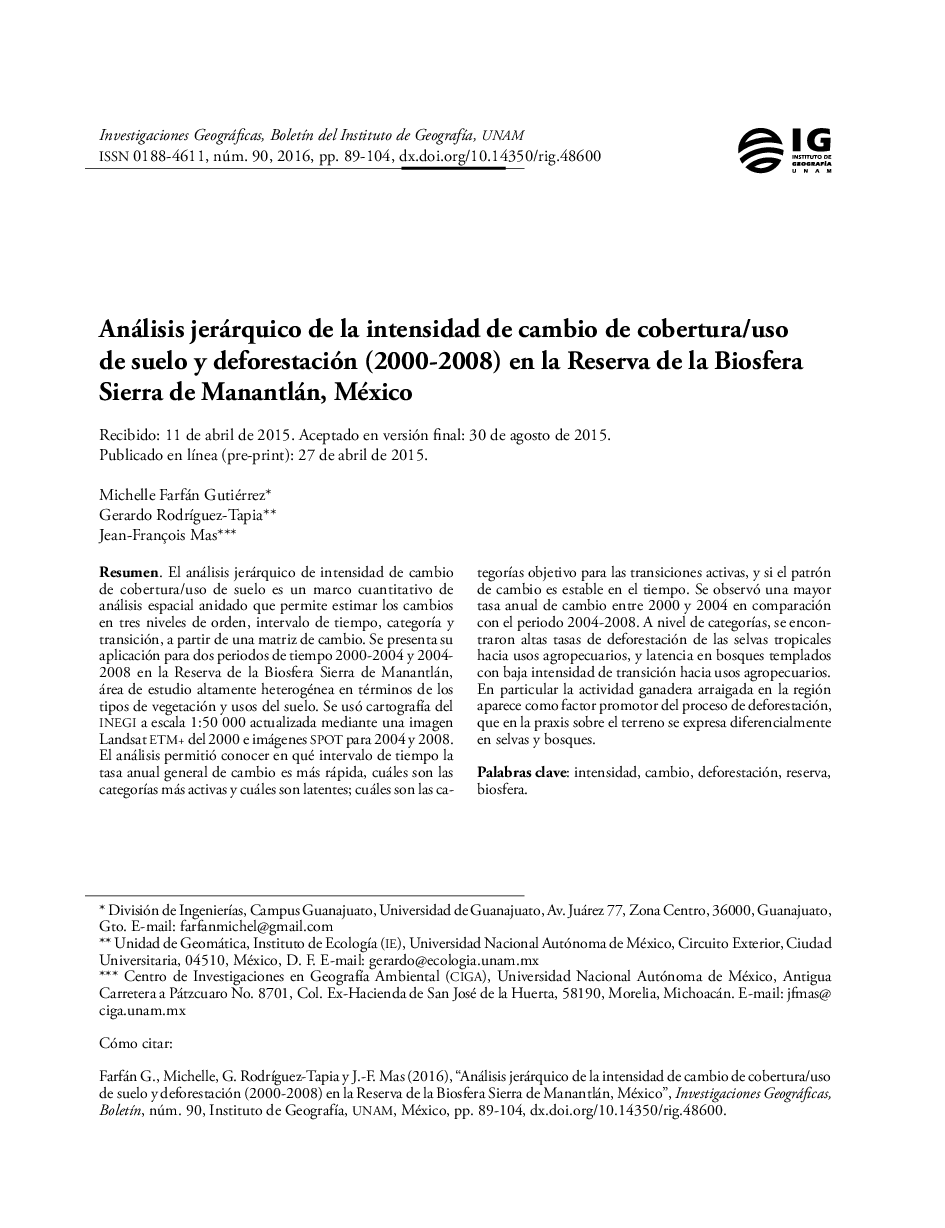| Article ID | Journal | Published Year | Pages | File Type |
|---|---|---|---|---|
| 7474379 | Investigaciones Geográficas, Boletín del Instituto de Geografía | 2016 | 16 Pages |
Abstract
In terms of change rate, the tropical forests had an estimated -1% per year rate. In contrast, forests showed lower rates of change of -0.5% per year. The land uses change rates such as irrigated agriculture, induced pasture, urban areas and iron mine were above 1% per year, indicating an increase in its surface in both periods. An intensive process of change observed in both periods at the category level is the loss of tropical dry forest. The areas of higher change are located in the buffer and influence zones, where the management plan does not regulate land use. In particular, long-established livestock production activity in the region appears as the driving factor of deforestation, affecting both tropical and temperate forests though at different rates. Finally, the cartography derived from the analysis of intensity of change is a contribution for decision-making concerning the management of the BRSM with emphasis in the buffer zone.
Related Topics
Social Sciences and Humanities
Social Sciences
Geography, Planning and Development
Authors
Michelle Farfán Gutiérrez, Gerardo RodrÃguez-Tapia, Jean-François Mas,
